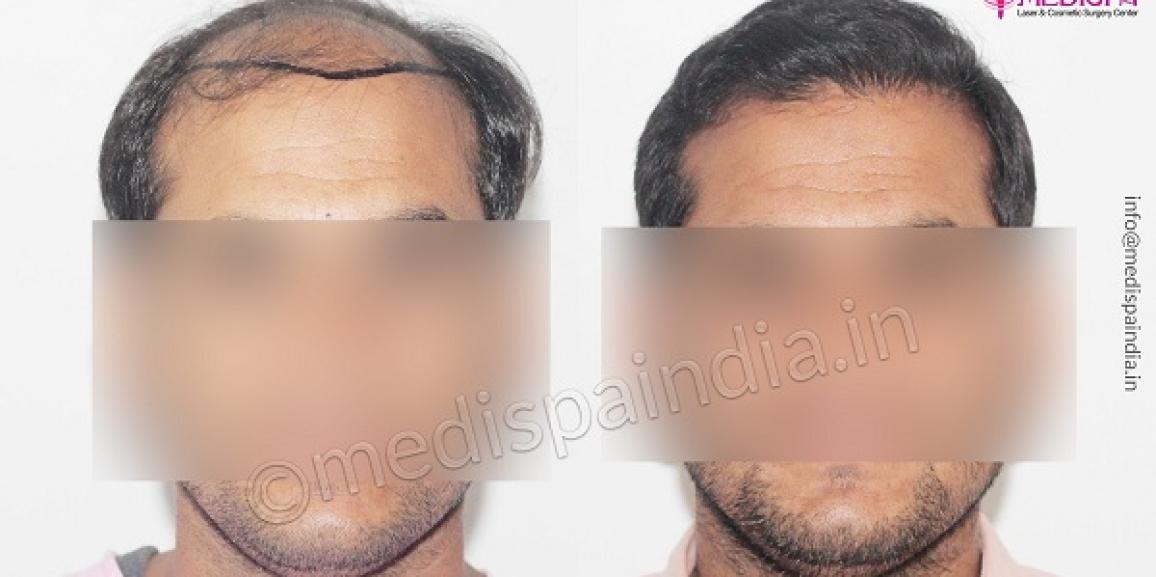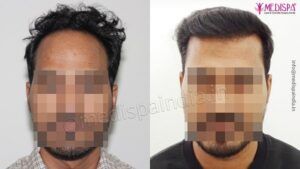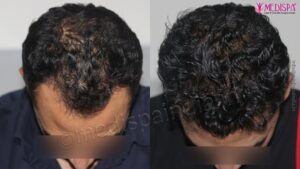
In comparison to other western nations, hair transplant in India is quite inexpensive. The economy of the nation and the reasonably low cost of living in India may be the cause. The methods used for hair transplantation are the same over the world, however prices vary.
Due to the economical technique and upkeep of international standards and facilities in a few hair transplant clinics in India, hair loss sufferers from all over the world pick India as their hair transplant destination. Like any other city, hair transplant in Ajmer has seen a significant increase in the number of people choosing to have a hair transplant to address their hair loss issues.
The hair transplant cost in Ajmer is reasonable, but the facilities and treatments are not very sophisticated, still using outdated equipment and techniques. Dr. Suneet Soni, the director of the Medispa Hair Transplant Clinic, is renowned for its extensive infrastructure, state-of-the-art operating room, well-stocked arsenal of cutting-edge technology, and high loop microscopes made in Germany.
Receding hairline:
This condition, in which the hairline pulls back and creates a larger forehead, is frequently observed in men. After puberty, this might show up at any age. By your late 30s, your hairline will have sharply receded. Recede hairline often starts with the temporal area and includes both the frontal and temporal hairlines. The frontal line is moved closer to the forehead as the temporal region advances at a quicker pace. It creates a V-shaped pattern known as “widow’s peak” in most cases.
Women’s hair loss differs from men’s in that it mostly affects central thinning, which widens the parting. However, even they may have a receding hairline, which is mostly brought on by traction alopecia, which is brought on by women’s consistent usage of tight hairstyles.
What causes a hairline to recede?
Regular hair loss of a certain amount is a typical phenomenon that is counterbalanced by new hair growth. However, hair loss or a receding hairline may occur if, for whatever reason, hair shedding outpaces hair growth.
The receding hairline may have a variety of reasons, such as:
- Genetic origin: A receding hairline may have a hereditary cause, since it results from the hair follicles’ heightened susceptibility to androgenic hormones. The DHT-sensitive hair follicles, which are mostly found in the frontal and vertex regions of the body, are affected by this oversensitivity. Regretfully, you could be the one to pass on a receding hairline to subsequent generations if this is the case.
- Hormonal changes: A receding hairline and hair loss in sensitive hair follicles may be caused by hormonal changes.
- Traction alopecia: Women who wear tight braids or hairstyles frequently get traction alopecia, a condition in which their hair constantly pulls out of their scalp.
- Styling products: The majority of women regularly use styling equipment including chemical straighteners and heated tools, which may contribute to a receding hairline.
- Mature hairline: This is the phrase used to describe the point at which a hairline naturally stops growing as a person ages.
What is hair transplant?
By moving hair follicles from the donor region to the recipient bald area, hair transplant cosmetic treatments aim to cover the bald area as much as possible. The chosen donor site should have DHT-resistant hair follicles; these might be body hairs or, more ideally, the back and sides of the head. There should be a sufficient number of hair follicles in the donor location to offer suitable and pleasing covering. The hair transplant is a delicate and technique-sensitive process that requires close attention at every step.
You receive the desired outcomes from the hair transplant based on the donor area’s hair density. This method simply returns what you already have at the donor site to the recipient location without creating a new hair follicle.
Hair transplant procedure:
You must initially be knowledgeable with the entire hair transplant process in order to recognize the crucial pointers for getting the intended results from the treatment. The hair transplant process entails the following steps:
- Shaving the head in accordance with the FUT or FUE hair transplant technique selected.
- Next, a local anesthetic injection is given to the recipient or donor site.
- Hair follicles are harvested using the chosen technique (FUE or FUT) and a sufficient quantity of surrounding tissues.
- Slitting formation is used to prepare the recipient location for the transplantation of follicular units.
- After that, the follicular grafts are implanted in the intended recipient location.
- Post-hair transplant aftercare instructions are provided.
- The next day, experts at the clinic will use an air wash to clean the small clots.
- Scheduling of follow ups
The function of hair transplantation in constructing natural hairlines
The FUT and FUE hair transplant techniques are the two main methods used to carry out hair transplants. The technique should be selected after considering the patient’s circumstances as well as a number of other relevant elements pertaining to the hair transplant surgery. Age, sex, level of baldness, number of hair transplants required, quality and quantity of hair follicles at the donor site are among the criteria.
With the FUT hair transplant process, different types of hair grafts may be harvested and suitably chosen to be implanted at the right zone to obtain desired cosmetic results. Increased hair density in the bald region is made possible by the FUT hair transplant technique’s higher output of hair grafts.
Medispa hair transplant clinic is a trailblazer in offering hair transplants that are both highly cosmetic and reasonably priced. We provide the most luxurious facilities in the globe together with a really soothing hair transplant experience.







